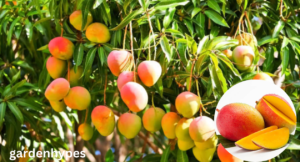Mango Shortage Causes Global Impact Sustainable Solutions
Introduction to the Mango Shortage
If there’s one fruit that can ignite a global frenzy, it’s the mango. Known as the “King of Fruits,” mangoes are a summer delight cherished for their rich flavor and versatility. But in recent years, a looming crisis has left mango lovers around the world disappointed—a mango shortage. What’s behind this shortage, and how is it impacting the world? Let’s dive in.
Why Mangoes are Called the “King of Fruits”
From India to the Caribbean, mangoes have earned their royal title thanks to their rich taste, vibrant color, and cultural significance. Beyond being delicious, they are also a powerhouse of nutrition, packed with vitamins, fiber, and antioxidants.
click in link lemon shortage
A Global Love for Mangoes
Mangoes are a staple in many cuisines and are essential for juices, desserts, and even savory dishes. This universal love makes their shortage more than just a local issue—it’s a global concern.
Factors Behind the Mango Shortage
Climate Change and Unpredictable Weather
The primary culprit behind the mango shortage is the changing climate. Extreme temperatures, untimely rains, and prolonged droughts have disrupted the delicate mango-growing season. For example, India, the largest producer of mangoes, has reported significant losses due to heatwaves and unseasonal rainstorms.
Agricultural Challenges
Traditional farming practices are struggling to keep up with modern challenges. Limited access to water, lack of modern irrigation systems, and soil degradation have all contributed to declining yields.
Pest Infestations and Diseases
Mango trees are increasingly under attack from pests like mealybugs and diseases such as powdery mildew. These threats have devastated crops and reduced the availability of quality mangoes in the market.
Poor Supply Chain Management
Even when mangoes are harvested successfully, poor storage and transportation systems in many regions lead to significant post-harvest losses.
The Regions Most Affected
South Asia – The Heart of Mango Production
Countries like India, Pakistan, and Bangladesh are feeling the brunt of the shortage. These nations rely heavily on mango exports, and a dip in production affects both their economies and global markets.
Latin America and African Mango Producers
Regions like Brazil, Mexico, and parts of Africa, which also contribute to the global mango supply, are witnessing similar struggles due to changing climates and agricultural issues.
Impact on Western Import Markets
Consumers in the US, Europe, and other regions are experiencing skyrocketing prices and limited availability of their favorite mango varieties like Alphonso, Ataulfo, and Tommy Atkins.
Economic and Cultural Impacts of the Mango Shortage
Rising Prices and Economic Ripples
When supply drops, prices soar. This economic principle is hitting mango farmers and consumers alike.
- Impact on Farmers: Small-scale farmers are losing income, which could drive them out of the industry altogether.
- Effect on Local and Global Markets: Exporting countries are seeing reduced revenues, and importing countries are facing higher costs.
Cultural and Social Repercussions
Mangoes are deeply intertwined with cultural traditions. Festivals, family gatherings, and even weddings often revolve around mango dishes. A shortage disrupts these cherished moments.
Mango-Related Industries at Risk
Industries like mango-based beverages, jams, and cosmetics are also taking a hit due to the shortage of raw materials.
Addressing the Mango Shortage
Sustainable Farming Practices
To combat the shortage, farmers need to adopt sustainable techniques like drip irrigation, crop rotation, and organic fertilizers to improve yields.
Innovation in Agriculture and Technology
The use of technology, such as climate-resilient mango varieties and AI-based pest control systems, could revolutionize the industry.

Government and International Cooperation
Governments must step in to provide subsidies, training, and resources to farmers. Collaborative research on improving mango crop resilience is also crucial.
What Consumers Can Do
- Reducing Food Waste: Every mango saved counts. Avoid letting them rot in your fridge!
- Supporting Local Farmers: Buying locally grown mangoes not only supports the economy but also reduces the environmental cost of transportation.
Looking Ahead
Long-Term Outlook for Mango Production
The future of mango production depends on how quickly farmers, governments, and consumers can adapt to the challenges.
- Adapting to Climate Change: Investing in climate-smart agriculture is key.
- Diversifying Mango Varieties: Growing resilient varieties can help mitigate losses during tough seasons.
Conclusion
The mango shortage is a wake-up call for the world. It highlights the need for sustainable practices, technological advancements, and global cooperation. While the road ahead may be challenging, with the right steps, we can ensure that the “King of Fruits” continues to grace our tables for generations to come.
click in link lemon shortage
FAQs
- What are the main causes of the mango shortage?
Climate change, agricultural challenges, pests, and poor supply chain management are the primary reasons. - How does the shortage affect mango farmers?
Farmers face reduced incomes, which can lead to financial instability and even force them out of the industry. - Are there alternatives to popular mango varieties?
Yes, growing and consuming lesser-known varieties can help balance demand. - Can consumers help reduce the mango shortage?
Absolutely! Reducing food waste and supporting local farmers are two impactful ways.
